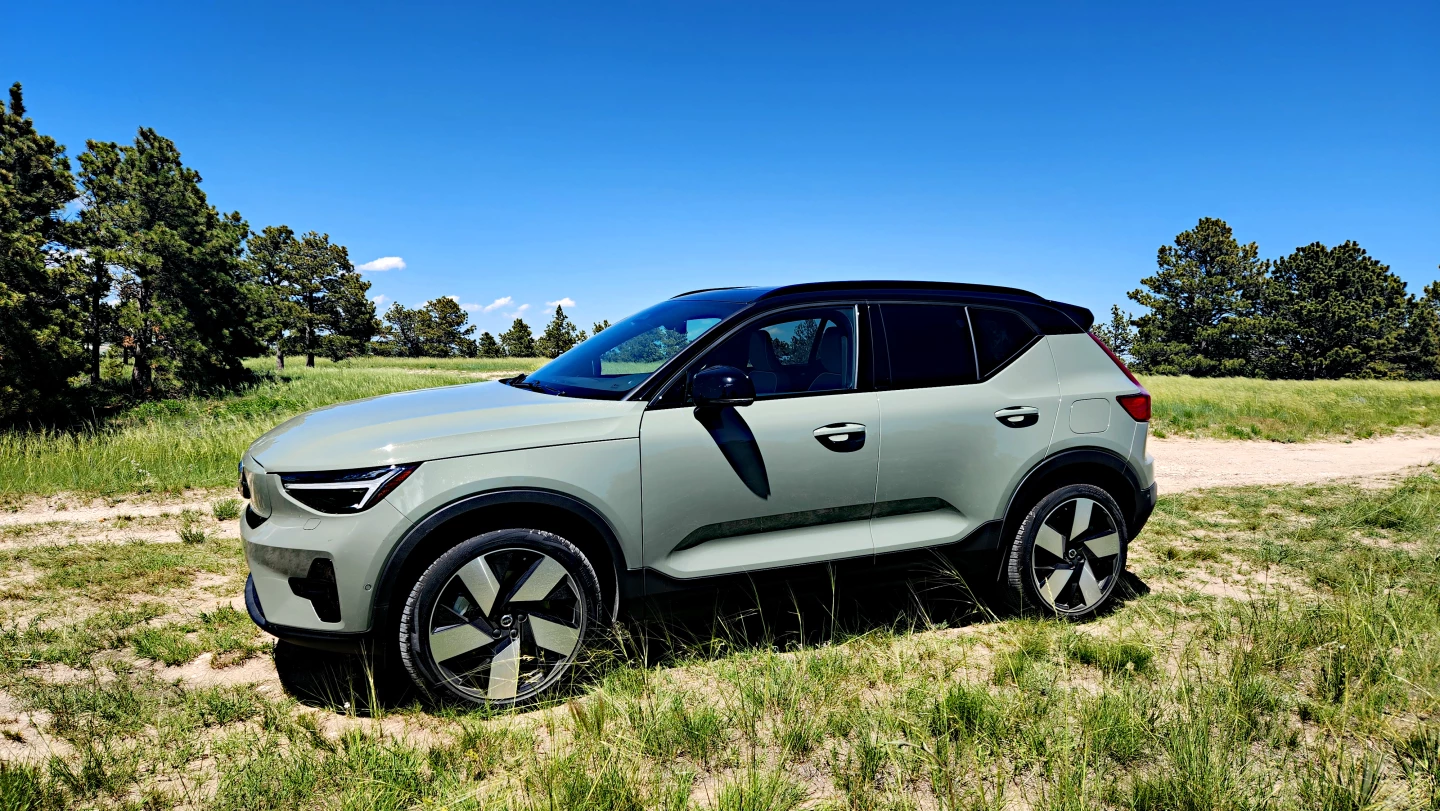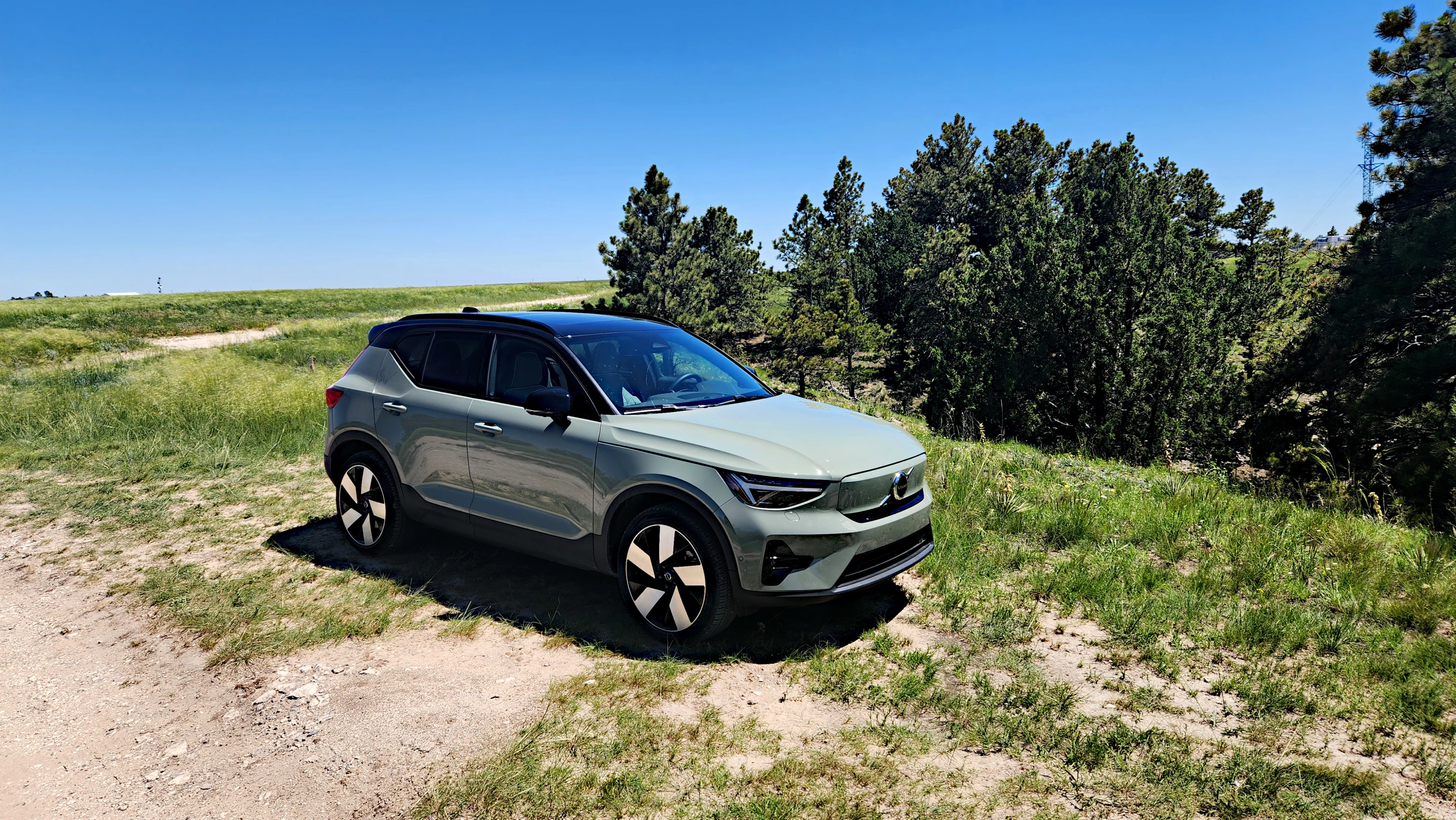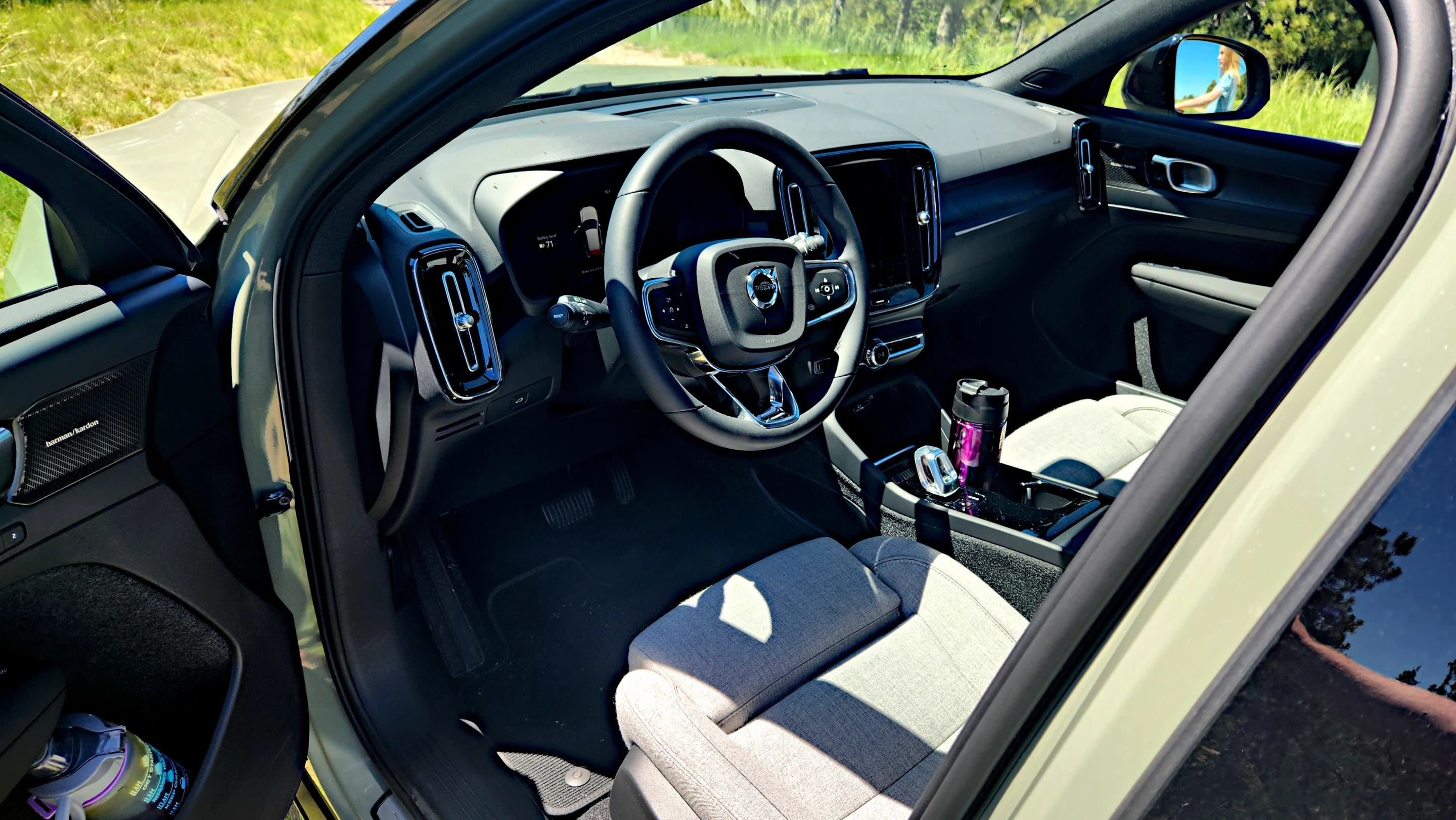The XC40 Recharge is an all-electric subcompact crossover based on the internal combustion version of the XC40 compact utility. At launch in 2019, it was Volvo’s first battery electric model but the Swedish carmaker's electric offerings have expanded since then.
At a Glance
- Familiar interface and interior without a lot of overdone future tech
- Lower cost than most of its rivals
- Less range than those costlier competitors
- Easy to like and enjoyable to drive
Competition in the luxury market for compact EVs is pretty stiff. Several models of note, such as the Jaguar E-Pace, Tesla Model Y, and Audi Q4 e-Tron are also found in this segment. Unlike the others, the Volvo XC40 Recharge, being part of a model lineup that wasn’t electric from the ground up, has a contemporary design with a distinct lack of uber-futuristic elements. That, to us, is a good thing. Design elements meant to push futuristic ideals, often at the expense of usability and even practicality, can be an annoyance.
The 2023 Volvo XC40 can be found with a 2.0-liter four-cylinder engine in its standard internal combustion (ICE) engine model. Volvo then decided to forego the plug-in hybrid route in larger Recharge models and instead made the XC40 Recharge a fully battery-electric model instead. Trim levels remain the same as they are for the standard XC40 ICE models: Core, Plus, and Ultimate. Our test vehicle was an Ultimate model.
Powering the 2023 XC40 Recharge is a 78-kWh (75-kWh usable) battery pack mounted beneath the frame rails underneath the floor. Motors at each axle combine to provide all-wheel drive with 402 hp (295.7 kW) and 486 lb-ft (659 Nm) of torque. That’s roughly double the horsepower of the ICE variant and nearly triple the torque, which more than makes up for the nearly 900 lb (408 kg) of weight added by batteries and components.

The range estimate for the XC40 Recharge is at 223 miles (359 km) per charge at 39 kWh per 100 miles (161 km) of driving. That EPA estimate is low, in our experience, as we were closer to 240 miles (386 km) per charge in our week with the SUV. This was mainly due to our higher efficiency return at just under 36 kWh per 100 miles.
Our exact average, after driving to about 25% and recharging twice, was 35.7 kWh per 100 miles. Our first run through was heavy on highway miles (driving over 55 mph (88.5 km/h) to 24% battery. The next run through was mostly in stop-and-go city and low-speed (sub-40 mph (64 km/h)) driving over the next several days. This everyday style driving upped efficiency further and had us recharging at 25% battery. These two trips averaged together gave us a real-world confidence of nearly 240 miles (386 km) per charge. Interestingly, a new battery design for the 2024 model year will up the EPA’s rating for the XC40 Recharge to 293 miles (472 km) per charge in a new rear-wheel drive option and 254 miles (409 km) for the AWD model.
As a compact five-seat model, made to comfortably carry four, the 2023 XC40 Recharge is a nicely done vehicle. Its styling is unique for the class and its interior is well appointed. The base model includes amenities like heated front seats, simulated leather, dual-zone climate, a 9-inch touchscreen, and more. Cargo space is adequate, though not large when compared to some others. It’s enough for most people’s needs.
Infotainment is Google-based with a smartphone-like interface that might be confusing at first. The learning curve is slight, however, and the user interface becomes second nature as it’s very much like an Android phone. Both Android Auto and Apple CarPlay are there.

Our greatest complaint about the 2023 XC40 Recharge is in its upper-end options. In order to get adaptive cruise control, a more efficient heat pump for cabin heating, and heated rear seating, one must opt for the most expensive Ultimate trim level. These items aren’t available à la carte. There is a US$5,000 difference between the base Core model and the top-most Ultimate model, which isn’t terrible, but it moves the XC40 Recharge from being a value option luxury EV to a priced-like-the-others model.
Even at that higher price, though, the little Volvo EV does have a lot going for it. It’s engaging to drive, comfortable as an every day, and good for longer drives. The battery range is sub-par for the class, but considering the lower price tag and its urban- and suburban-centric design, it’s plenty for most people’s real-world needs. The starting price for the 2023 Volvo XC40 Recharge is US$54,645 plus delivery.
Product Page: Volvo XC40 Recharge













